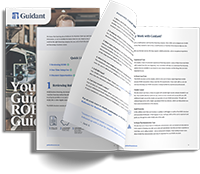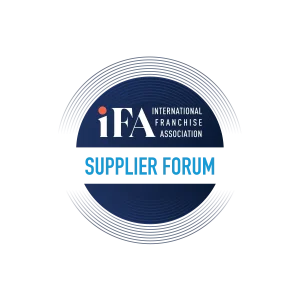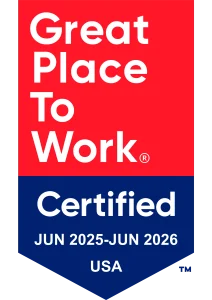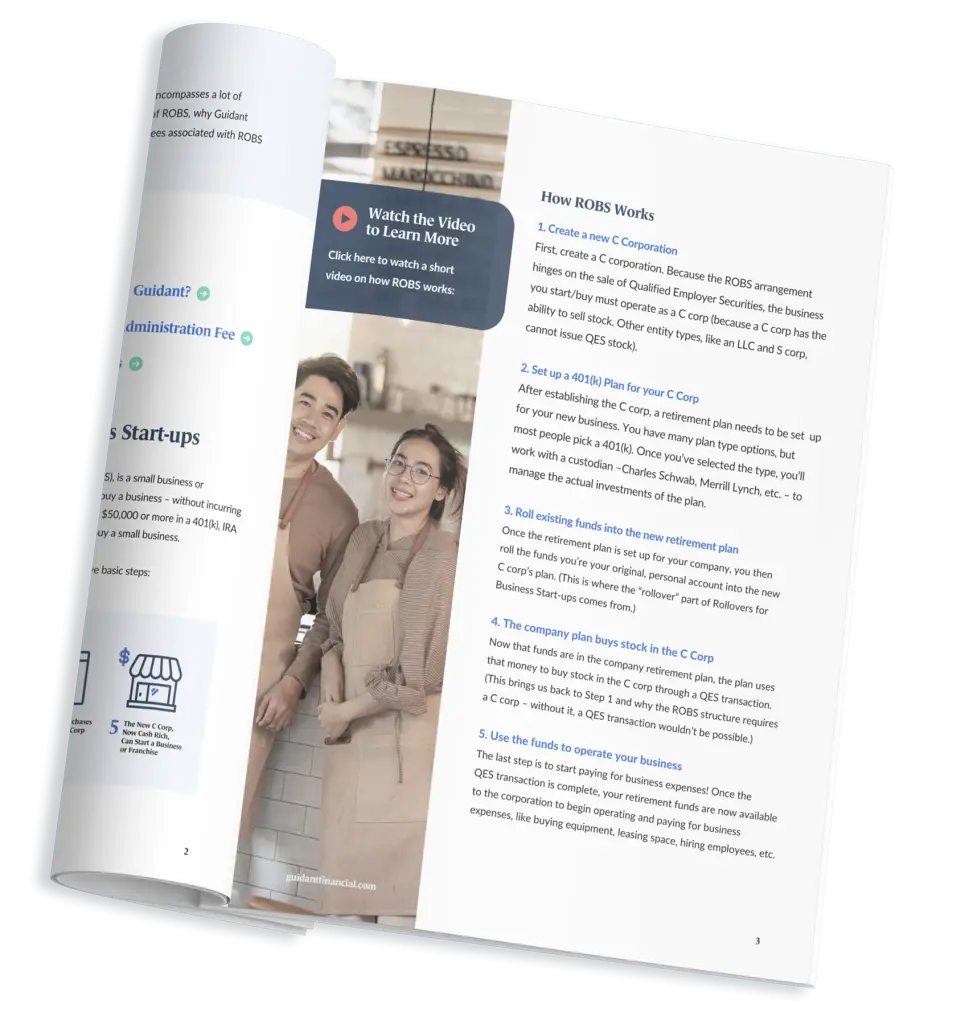It’s that time of year again! While many people focus on holiday celebrations and new year’s resolutions this time of year, small business owners also need to focus on year-end business planning. This includes both preparing for the new year, AND taking stock of the year past!
But because the end of the year is so hectic, it’s not always easy to keep up with all the end-of-year preparations you should be doing to wind down 2021 and plan for 2022.
These activities — taking stock, preparation, and planning — are key to running a successful business. After all, what is measured is improved. This review helps you realign goals and resources so you can take advantage of new opportunities.
That’s why we’ve prepared this year-end small business checklist. It’s a rundown of every major and minor task you need to take care of before 2022 becomes a reality.

Small Business Checklist: End of 2021
1. Prepare Your Key Financial Documents
Financial documents play a crucial role in your company. Reviewing your financial documents gives you three benefits.
First, it shows you whether you’re running a healthy business or if you need some belt-tightening going forward. Your documents should provide a guide to your company’s financial position and health, and should include details about your assets and liabilities, profit and expenses, and cash flow.
Second, if you do need some adjustment (more sales, say, or fewer expenses), financial documents show you where adjustments are needed and tell you how much you need to adjust. Third, if you’re in the market for funding, expansion, or mentorship, financial documents are often required to let interested parties see the financial records of your business.
The financial documents you need before year-end are:
- The balance sheet report, showing all the assets, liabilities, and equity;
- The income statement report, showing revenue, expenses, and profit; and
- The cash flow statement report, showing opening and closing cash within a specific period, with inflow and outflow itemized.
Let’s get started. Don’t forget to see if your accounting software, accounting team, or CPA can put these together for you!

Prepare Your Year-End Balance Sheet
A balance sheet helps you determine if you’re in the black or the red. It does this by comparing everything the business owns against everything the business owes. The business owns things like physical inventory, property or equipment, trademarks, and invoices the business needs to collect. The business owes things like pension plan obligations or invoices they need to pay. By doing this comparison, you can determine whether you should be cutting back on your spending, or pushing your business to grow. And yes, the balance sheet should ALWAYS balance.
How to Prepare Your Year-End Income Statement
The income statement is important because it clearly shows you if you are earning more than you’re spending, or vice-versa. It compares the amount earned in a period of time versus the amount spent. Because of this, it is also called a profit and loss statement. It’s different from the balance sheet because it looks at business expenses and earnings across a period of time, instead of a single, frozen instance like the balance sheet. It also doesn’t take into account any external equity you, as the business owner, might have, such as stock. While the income statement of a large company might be longer than that of a sole proprietorship, the overall format of an income statement is uniform across business sizes. First, choose a period of time, either 2021 as a whole or just the last three months. Write down all your revenues and gains during that period on the top half of the page. On the bottom half, document all your expenses and losses. Subtract the latter from the former, and you’ll be able to see your net income during that time period.
How to Prepare Your Year-End Cash Flow Statement
Your cash flow statement should show how much cash you have at the beginning and end of a specific period, and where it all went. On a cash statement, you want to document three things:
- Cash flow from operations, such as revenue and expenses. In other words, the money you earned or lost from doing business as usual.
- Cash flow from investments, such as assets bought and assets sold. This can also include stock.
- Cash flow from financial decisions, such as loans and their repayment.
Once you have an itemized list of all of the above, you should be able to clearly see up how much cash you have at end of this period. When compared to what you had at the beginning, you can see if you generated or lost money.
Putting Your Financial Reports Together
From these documents, you should calculate the following numbers:
- Current Ratio – the current assets divided by your current liabilities. Ideally, your current ratio should be between 1.5 and 2. A current ratio of 1 means you may not have enough money to last the year, whereas a current ratio of more than 2 could mean you’re not investing enough money into your business or outside investments.
- Debt Ratio – your total debt divided by your total assets. A “good” debt ratio depends largely on the industry, but anything below 0.3 is considered fair. Anything above 0.6 tends to make it difficult to bet additional loans.
- Gross Profit Margin – First, divide your profit (what you have leftover after paying your costs) by total revenue (the total money you brought in). This shows you what percentage of your income is actually profit!
Small business owners should keep these statements on a monthly or at least a quarterly basis. You want to know the state of your business consistently, so you can plan accordingly. If you want to expand, you need to know you can, for instance. If your business is starting to show red ink, you want to know as soon as possible.
However, especially if your business is a new startup, you may have put off either compiling the information or having it done. There’s no time like the present!
2. Get Your Tax Documents Together
While the end of the year may not be tax season, it’s a good idea to get Get your tax documents together as well. The financial reports you prepared in the previous step should help you fill out your small business return. However, you may need to fill out additional tax forms, which may include:
- Form 1099-NEC and Form 1096
- W-2 Forms and W-3 Forms
- State and federal payroll returns annually (Form 940) or quarterly (Form 941)
You should also compile your income, both business and personal, if relevant. Gather all your deductions.
3. Assess Your 2021 Goals
If you had a specific 2021 goals list, pull it up and go over it. If you didn’t, write down what your unwritten goals were (and consider a written list for 2022). Review your goals systematically and assess them using the following questions:
- Were your goals achieved? Why or why not?
- If they were exceeded, why? How?
- What are the next steps? (Do you want to use higher than anticipated revenue to expand, for example, or make debt payments?)
- If they fell short, why? How?
- What are the next steps? (Do you need to pull back on your product line, for example? Pare down your forecasts? Lower prices?)
4. Plan Employee Morale Events
Don’t forget your employees in your year-end planning. They’re an important ingredient in your business success. Not only that, but the year-end holiday season provides multiple opportunities to reward them for what they’ve done.
As a stellar business owner, you want to boost morale and company loyalty. Consider what your employees might value: A big holiday party? More time with their family over the holidays? (If so, can you swing extra days off for everybody?) Flexible time to shop? (Could you give flex hours so they avoid the huge crushes in stores?) Company time to conduct a drive for charity? Could that be used for your business’s benefit?
5. Plan Your Own Vacation
All too often, small business owners put off their own vacation until the year is totally over! Everybody needs some time to recharge and relax. Plan a vacation or think through your time off before the year is out.

Small Business Checklist: Start of 2022
Once you’ve drawn together the material for year-end 2021 planning, it’s as easy as pie to plan for the new year. With your business needs and goals and clearly visible, your planning will be less time-consuming and more convenient.
With that in mind, here’s what to do as the calendar moves into the new year:
1. Plan 2022 Goals
Your review of 2021 goals should have given you a clear picture of at least some of your 2022 business goals. Now’s the time to write them down. Do you need to increase sales? Expand your offices? Hire new employees? Keep a more rigorous inventory count? Institute more thorough training? Reduce costs? Which ones? How? Don’t, of course, rely only on past goals to chart your course. They’re crucial, but not sufficient. Did circumstances or changes in 2021 — beyond COVID-19 — point out a need for new goals? Interest rates, for example, fell significantly in 2020 and have stayed low. Could you get a loan for small business needs or refinance your current funding? Did your tax position indicate you could benefit from a new corporate structure? If your financial statements indicated a need for improvement, how can you improve them? What are the most advantageous ways?
Is your business or sector itself experiencing any changes you need to plan for? What business industries are hot right now? Are your products likely to be increasing in popularity? Staying the same? Experiencing a decline?
2. Develop Action Plans Based on Your Goals
Once you’ve determined your key goals in the new year, devise an action plan for each.
The best goals are SMART (specific, measurable, attainable, realistic, and time-based). Break each goal down into daily, bite-sized chunks. Pinpoint key metrics you can measure and assess on an ongoing basis. What can you and your employees achieve? How many months or quarters will it take to achieve them?
3. Create Your Marketing Plans
Early 2022 is also a great time to plan your marketing campaigns for the year. What areas of marketing will you focus on? Social media? Video or content production? Do you need to hire staff to plan marketing? Do you need to change your marketing, or keep it constant? Do you have any data on what your customers responded to last year, or even customers like yours?
Is there any specific area or product you need to focus on? Should you target or emphasize a new demographic? A new sector? A new trend, such as sustainability or climate change?
4. Plan Time to Keep Financial and Tax Records Up to Date
If you haven’t been keeping important financial statements up to date each quarter, book in time in the new year to do that.
Do the same for tax records and any meetings with accountants or other financial advisors. Remember, staying on top of your business taxes and business performance will decrease the work you need to do at the end of 2022.
5. Assess Employee Engagement
Do you need to review your compensation and benefit structures to make sure they’re in line with your industry, region, and business values? Morale could suffer if this doesn’t occur at least once a year. If the compensation and benefits you offer aren’t competitive, your top people could walk out the door, leaving you with gaps to fill.
Do you have promotional paths in place? Companies that do reap significant gains in loyalty and longevity.
Keep employee morale events going, too. Again, you want to foster job satisfaction and loyalty to keep top-notch people. What does that the most? What returns the most to the company for the expenditure?
Planning for the year allows you to choose times that are advantageous to you and everyone. Some companies host summer barbeques or spring hikes as get-togethers, for instance. What works for your company?
6. Plan Vacations
Don’t forget to plan vacations, both for yourself and your employees.
For yourself, map out what you’d like to do and what is advantageous for the business. Many small business owners like to take their vacations when their business is known to have downtime — or at least less busy periods.
It’s a good idea to have employees give you (or their supervisors) their vacation plans far enough in advance to know when you have coverage and when not. If there are any peak periods when a cluster of vacations might be problematic, let employees and supervisors know so they can plan accordingly.


















